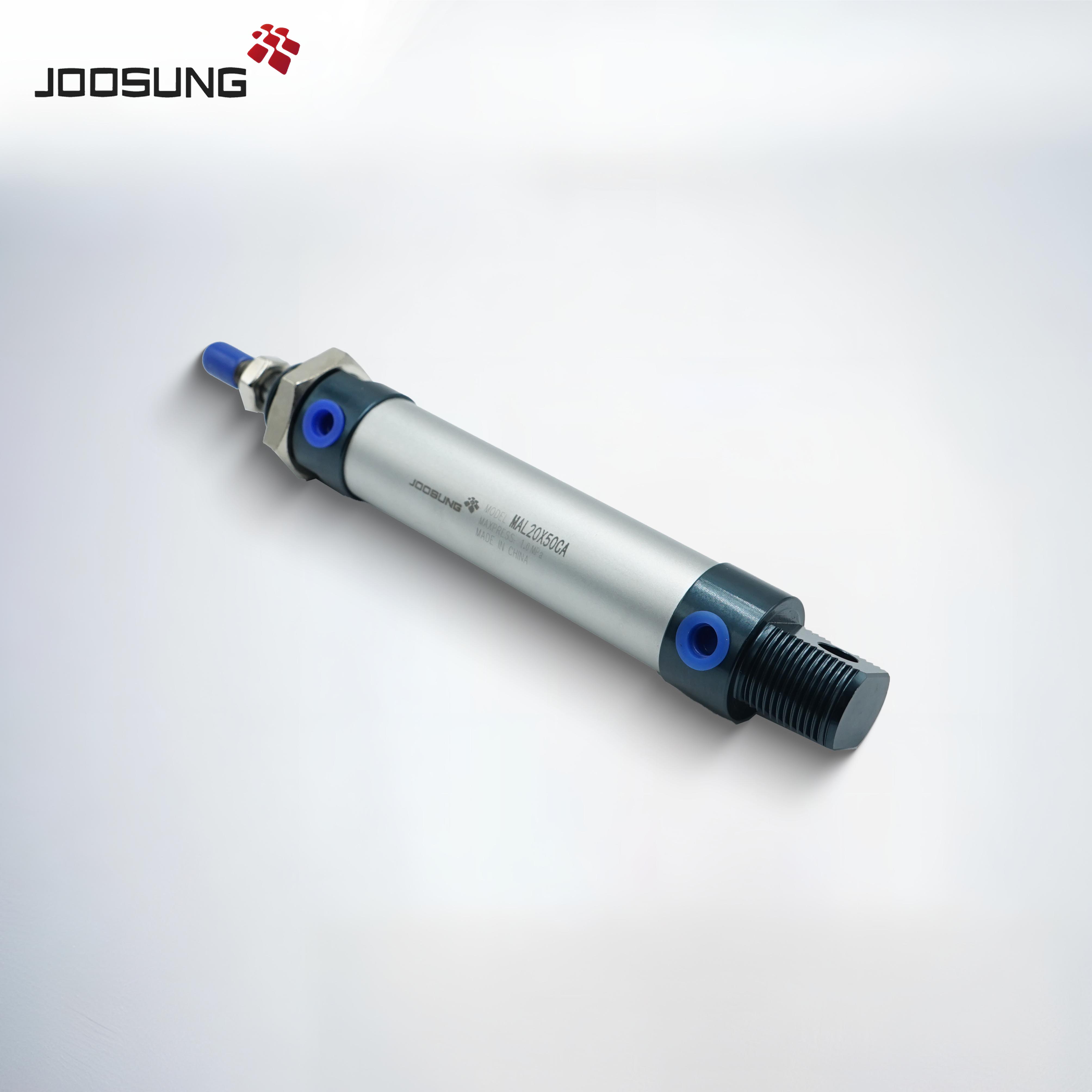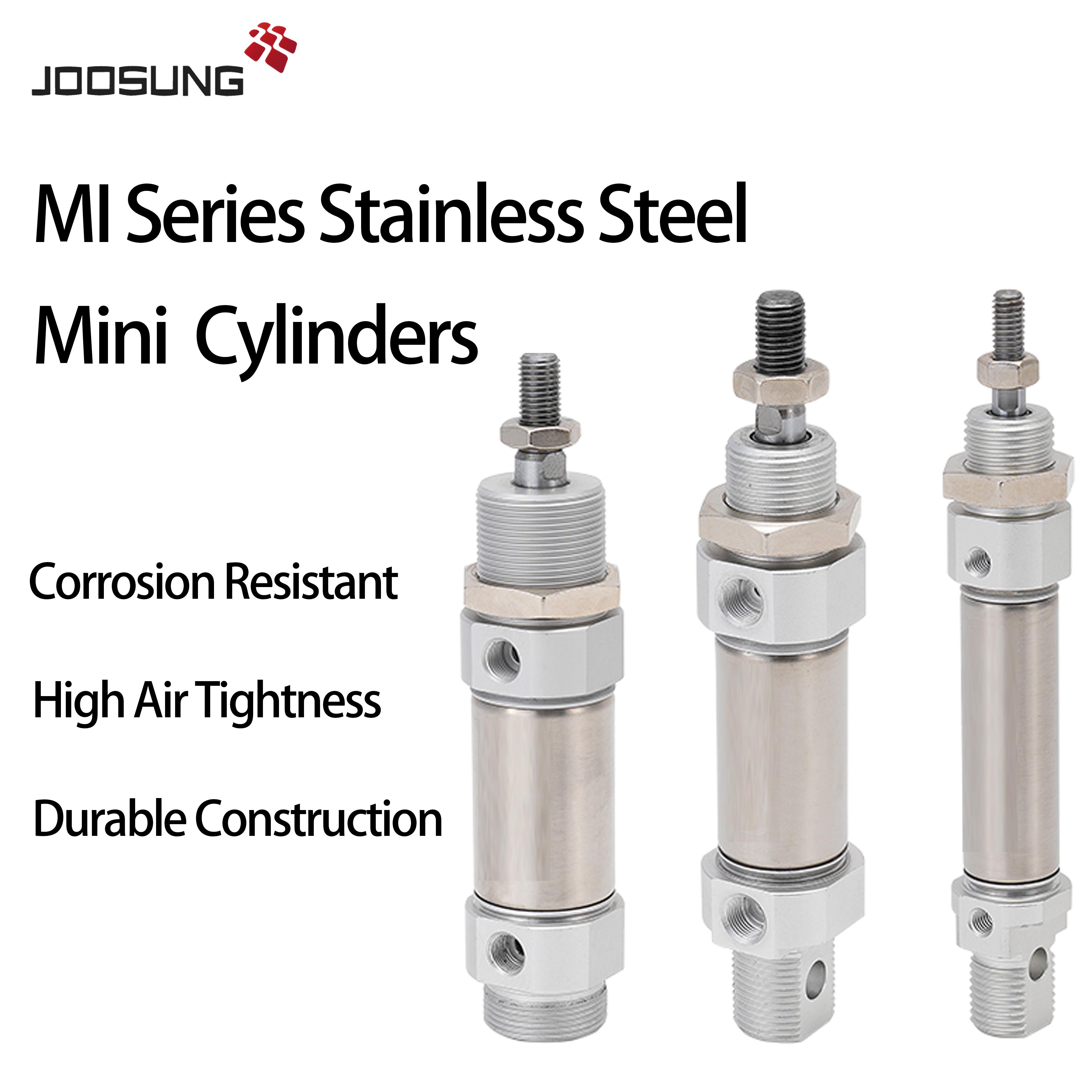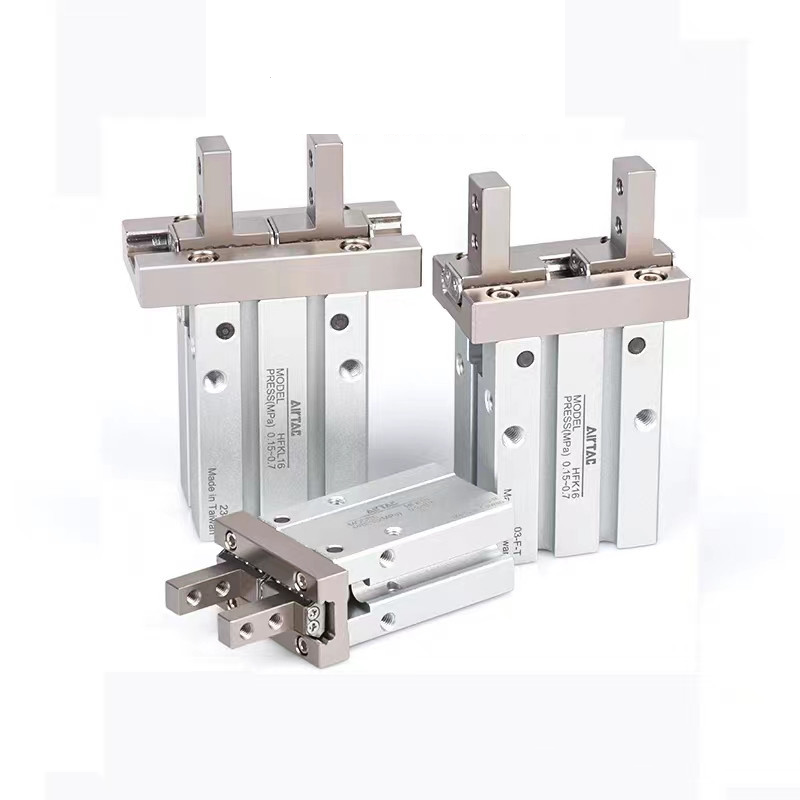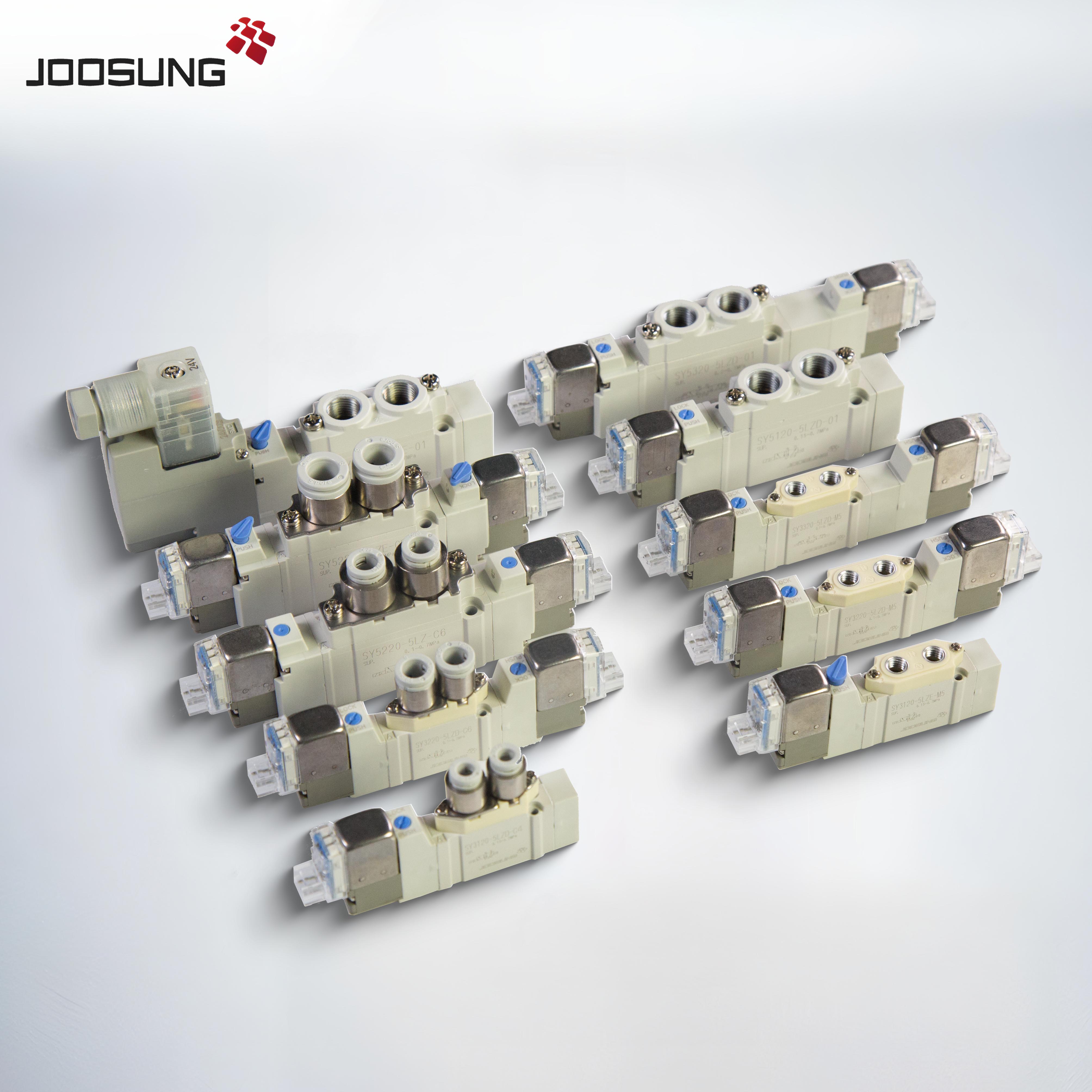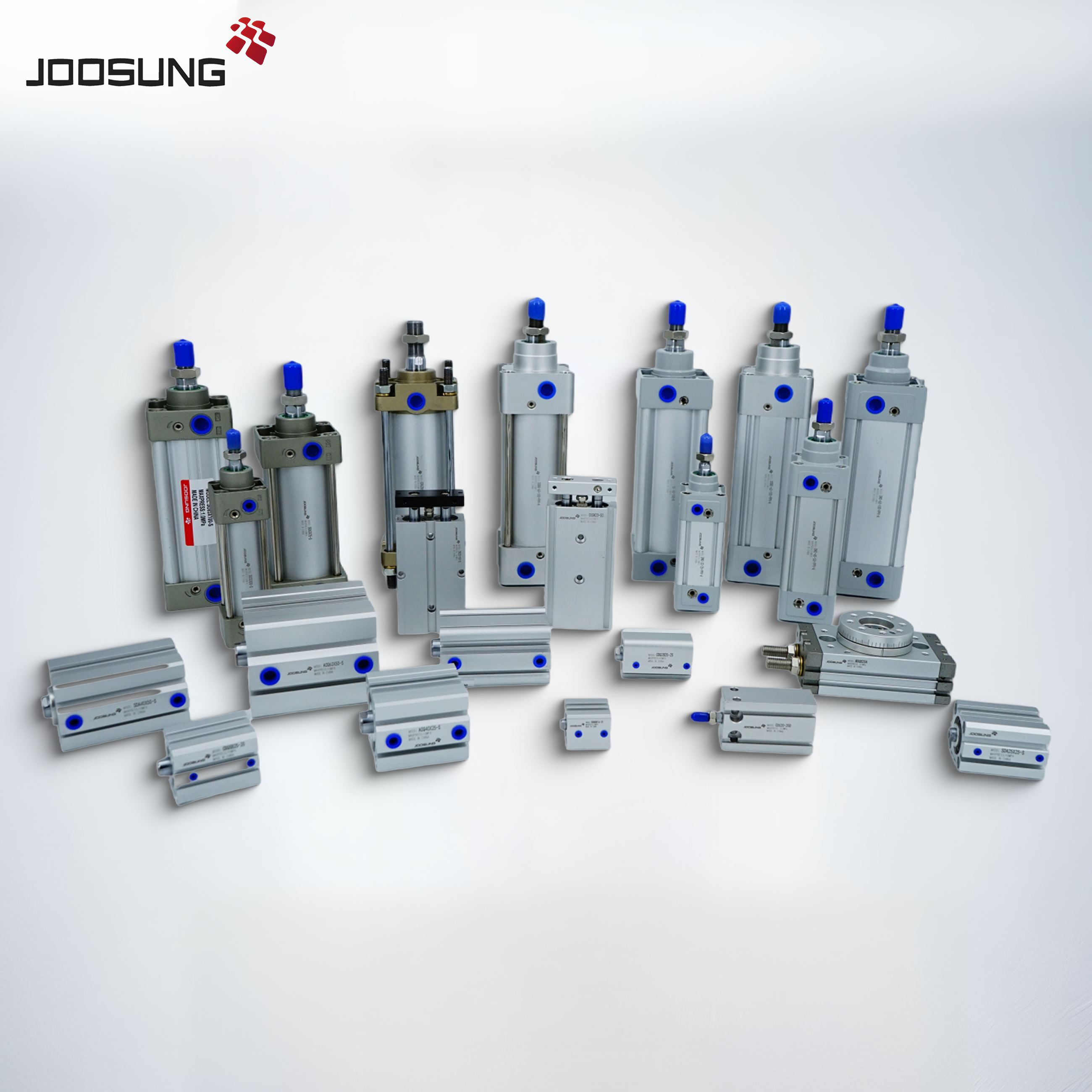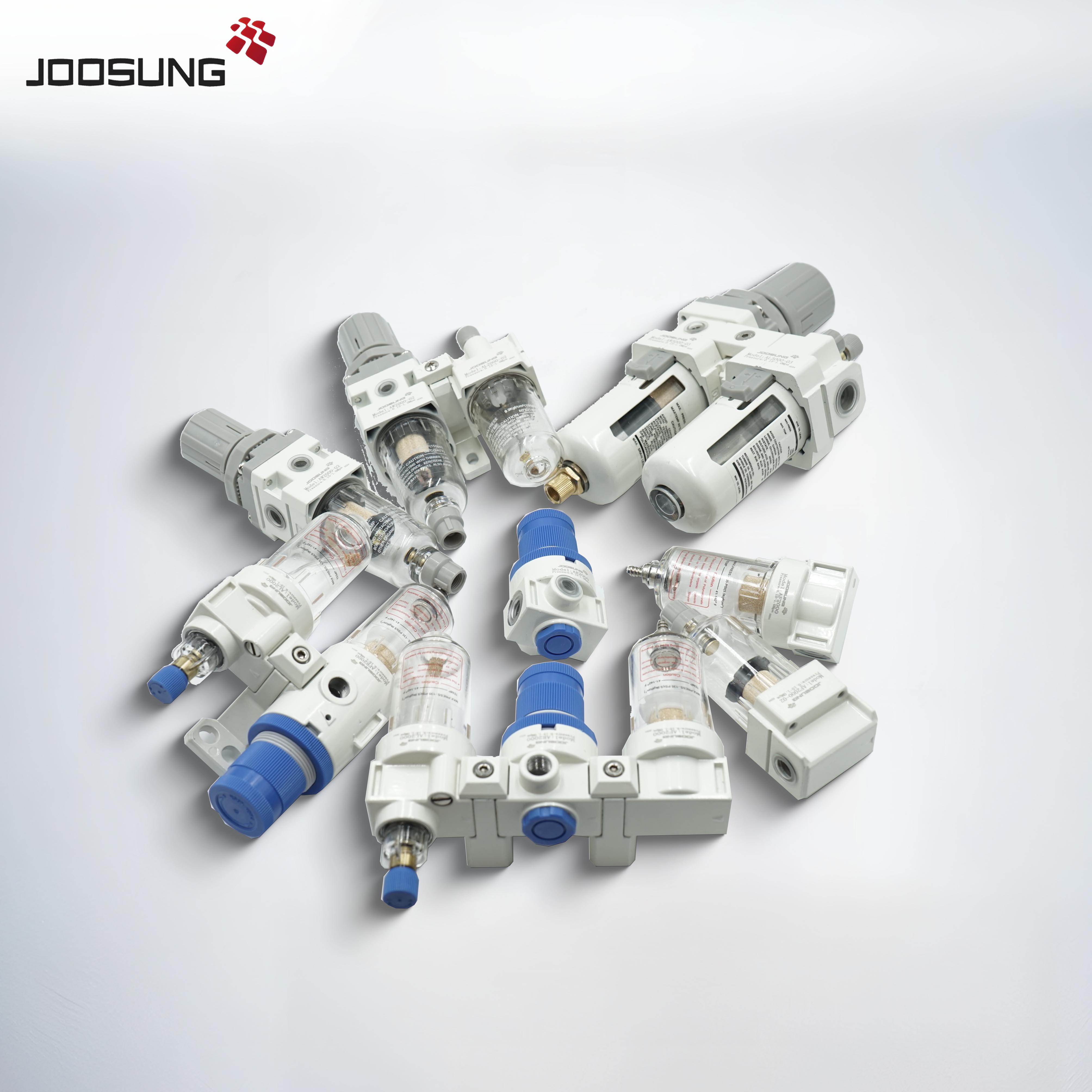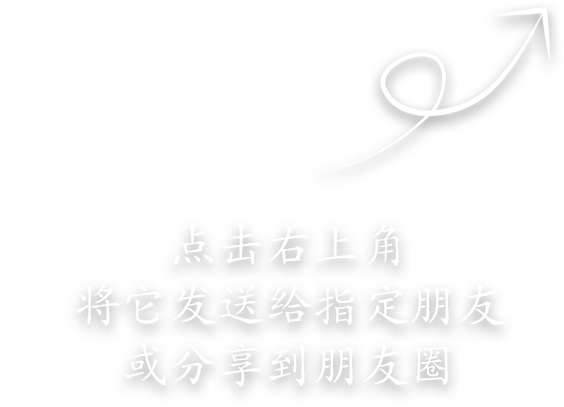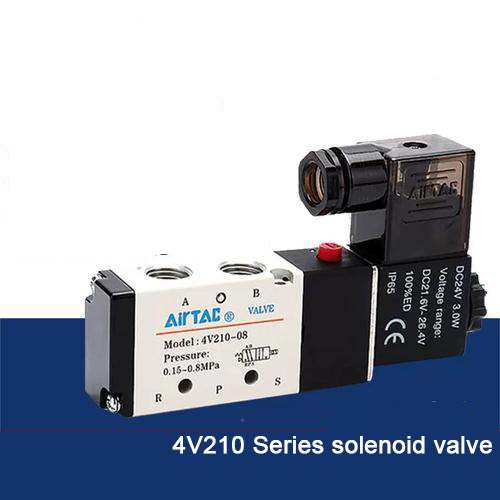
Choosing the right DC24V pneumatic solenoid valve for your application requires careful consideration of several factors to ensure that the valve meets the specific needs of your system. Here are key factors to help guide your decision:
1. Determine the Valve Type:
- 2/2, 3/2, 5/2, or 5/3 Valves: These numbers represent the number of ports (input, output, exhaust) and the switching function (e.g., 2/2 for two ports and two positions). Choose the valve based on the complexity of your system:
- 2/2 valve: Used for simple on/off control of airflow.
- 3/2 valve: Common in single-acting cylinders or basic switching applications.
- 5/2 valve: Used in double-acting cylinders for more complex operations.
- 5/3 valve: For directional control in more complex systems like cylinders with multiple positions.
2. Flow Rate (Cv):
- Cv (Coefficient of Flow) indicates how much flow the valve can handle. The higher the Cv, the larger the flow the valve can control.
- Calculate the required flow rate for your application and select a valve with a Cv value that supports that requirement. Choose a valve that can handle the maximum flow your system will demand without being oversized, which could lead to inefficiency and cost.
3. Operating Pressure:
- Ensure the valve is rated for the operating pressure of your system. Pneumatic solenoid valves have specific pressure ranges (e.g., 0-10 bar, 0-100 psi), so it’s crucial to match the valve’s pressure rating with the pressures in your system to avoid malfunction or damage.
- Check both the maximum and minimum pressure ratings to ensure that the valve will function correctly under the conditions expected in your application.
4. Voltage Compatibility:
- Since you are specifically looking for a DC24V solenoid valve, ensure that the valve is compatible with a 24V DC power supply.
- Ensure that your control system (e.g., PLC, manual controller) and power supply can provide the required 24V DC, and that the solenoid valve can handle this input without issues.
5. Response Time:
- Consider how fast you need the valve to operate. Fast switching times are critical in many automation and control applications.
- Some valves are designed for high-speed operation, which is important if your application involves rapid changes in airflow or pressure.
6. Valve Construction and Materials:
- The materials of the valve body and internal components affect its durability and performance in different environments. Common materials include:
- Aluminum for lightweight and corrosion resistance.
- Stainless steel for heavy-duty or harsh environments where chemical resistance is needed.
- Plastic for lighter or less demanding applications.
- Ensure the valve material is suitable for your environment (e.g., high temperatures, corrosive substances, etc.).
7. Sealing Type:
- The sealing type (e.g., rubber, metal, PTFE) impacts the valve’s durability and performance under specific conditions. Ensure that the sealing materials are appropriate for the types of gases or liquids in your system and the operating pressure and temperature ranges.
8. Mounting and Installation:
- Consider the mounting type (e.g., direct, panel, or manifold mounting) and ensure that the solenoid valve can be installed easily within your system layout.
- Check the size, shape, and connection types (threaded or push-in fittings) to ensure compatibility with existing piping or tubing.
9. Environment and Operating Conditions:
- Temperature Range: Ensure the solenoid valve can operate effectively within the temperature range of your environment. Extreme temperatures can impact the valve’s sealing and operation.
- Ingress Protection (IP) Rating: For applications where the valve is exposed to dust, moisture, or corrosive environments, choose a valve with an appropriate IP rating (e.g., IP65 for water and dust resistance).
- Vibration and Shock: Consider if the valve will be subject to vibration or shocks, as this could affect its performance. In these cases, a valve with a robust design and shock-resistant features is preferable.
10. Power Consumption:
- Energy Efficiency: DC24V valves tend to be more energy-efficient than AC valves, but you should still ensure that the power consumption of the valve fits within the energy constraints of your system, especially for long-running or high-frequency applications.
11. Valve Actuation Method:
- Direct-Acting vs. Pilot-Operated: Direct-acting valves are typically used for low flow rates and small sizes, whereas pilot-operated valves are more suitable for larger systems with higher flow rates and pressures.
- Choose the actuation method based on the operational demands of your application.
12. Valve Manufacturer and Quality:
- Choose a reputable manufacturer known for producing reliable and durable solenoid valves. High-quality valves typically offer better longevity, reduced risk of failure, and more consistent performance over time.
- Look for certifications (e.g., CE, UL) to ensure compliance with industry standards.
13. Maintenance and Servicing:
- Consider how easy it will be to maintain and service the valve. Some solenoid valves are designed for easy disassembly and cleaning, while others might require more specialized tools and knowledge.
- For high-maintenance applications, consider valves with easy-to-replace parts or those that have longer operational lifespans with minimal service requirements.
Conclusion:
To choose the right DC24V pneumatic solenoid valve for your application, consider factors such as valve type, flow rate, operating pressure, response time, material construction, and compatibility with your system's power supply and environmental conditions. By carefully assessing these factors, you can select a valve that meets the specific needs of your pneumatic system and ensures reliable, efficient operation.


